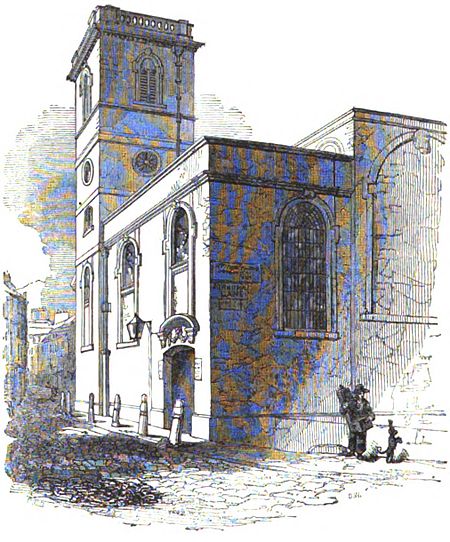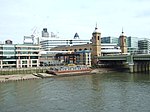All-Hallows-the-Great
13th-century establishments in England1894 disestablishments in EnglandBuildings and structures demolished in 1894Christopher Wren church buildings in LondonChurches rebuilt after the Great Fire of London but since demolished ... and 2 more
Demolished buildings and structures in LondonHanseatic League

All-Hallows-the-Great was a church in the City of London, located on what is now Upper Thames Street, first mentioned in 1235. Destroyed in the Great Fire of London of 1666, the church was rebuilt by the office of Sir Christopher Wren. All-Hallows-the-Great was demolished in 1894 when many bodies were disinterred from the churchyard and reburied at Brookwood Cemetery.
Excerpt from the Wikipedia article All-Hallows-the-Great (License: CC BY-SA 3.0, Authors, Images).All-Hallows-the-Great
All Hallows Lane, City of London
Geographical coordinates (GPS) Address Nearby Places Show on map
Geographical coordinates (GPS)
| Latitude | Longitude |
|---|---|
| N 51.51 ° | E -0.0902 ° |
Address
Dowgate Fire Station
All Hallows Lane
EC4R 3UL City of London
England, United Kingdom
Open on Google Maps










